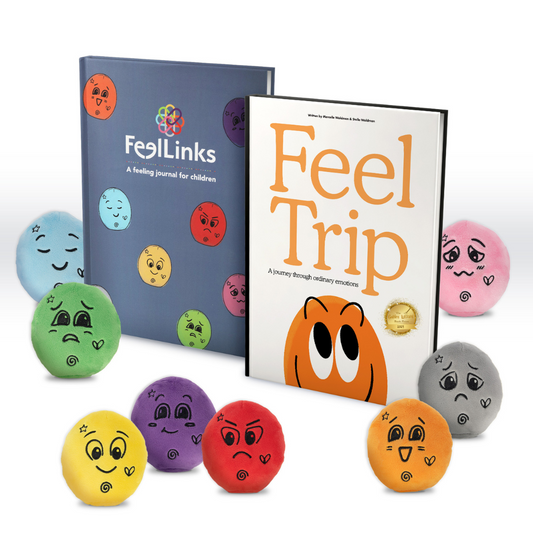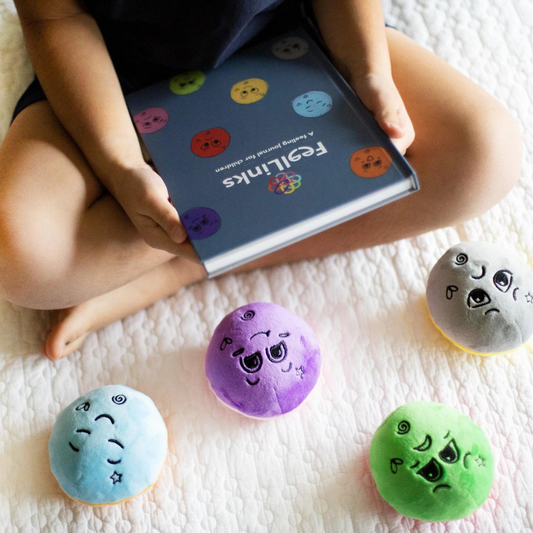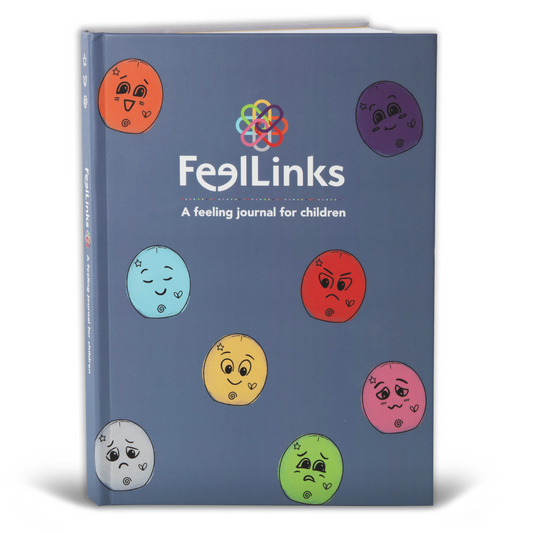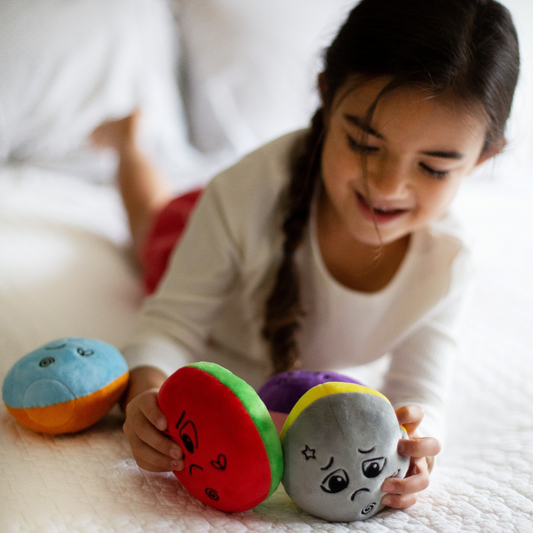How to Help Your Child Open Up When They Are Feeling Down
Share

I must start out by saying something that I have said many times before, we must teach our children about their feelings in order for them to talk about their feelings. We have to teach our children how to recognize, understand, name, express, and manage their feelings. They need to grow in their emotional intelligence skills in order to be able to talk to us about how they are feeling. This takes time, repetition and practice. This is why I created FeelLinks - a tangible tool to support your child (and you) in strengthening their social-emotional connections and confidence.
I am often asked by parents, "How do I get my child to open up about their feelings? He/she won't talk about their feelings". I hear parents say things like, "my child is..." "so quiet", "hard to read","does not open up", "keeps feelings inside". Here are some tips on how you can help your child open up and communicate about their feelings, specifically when they are feeling down.
Listen –
Listen without judgement. When your child chooses to open up, stay quiet and let them talk while you listen. If there is a pause, go ahead and restate what they are telling you – this shows them that you are listening. If you feel the need, go ahead and ask questions, which will lead to more listening– for example, use the phrase, “tell me more about that”.
Connect-
Find time to connect with your child. If you have more than one child, see if you can find time to connect with each child, alone, even if it’s a short time, every day. Whether you create art, listen to music, cuddle on the couch, watch a favorite TV show, or cook a meal together, find time to connect every single day.
Build Trust –
It is important that your child feels trust between the two of you. The time you spend connecting is a great way to build trust. When speaking and listening to your child, get down on their level and make eye contact, this will help them feel your honesty and sincerity. Validating and supporting what your child shares with you helps your child feel safe. Believe it or not, establishing routines and holding boundaries also help build trust – giving your child a sense of calm and reduces conflict.
Time to process –
Some children need time to process their feelings and they are not ready to open up right away. Perhaps your child needs time to process with you or maybe they would like some space. This could be an opportunity fora child to use a journal to draw and/or write to help get their feelings out on paper and eventually talk with you about it (of course, I must add, FeelLinks Journal is a wonderful resource to support this strategy). FeelLinks Dolls can also be a tool to help identify their emotions and they are also great for using as a communication tool. These skills may very well be new to your child - understanding, identifying and managing their feelings, so it may take time, but give your child the space and respect to talk about it when they are ready.
Stay available –
While connecting with your child, you can always strike up a conversation. Often, if you are playing a game or drawing together, conversations just flow and it takes the pressure off. For older children, if they are not ready to discuss their feelings right now, go ahead and let them know you are available when they are ready. You might say “I will be in my room reading a book, if you want to talk with me come on in” or “I will be making breakfast, I will be in the kitchen if you want me.” This lets your child know that you are available without pressuring them to talk.
Empathize –
Show empathy for your child when they are feeling down or sad (or any feeling, for that matter). Share with them about a time when you felt down/sad. This will help them understand that we all feel these common emotions, it is normal and we should talk about them. This might just help them open up to you.
Use books (or other media) –
Books are another favorite tool for helping kids open up about their feelings. If you are aware of what is causing them to feel down, find books based on that subject (local libraries are great resources). For example, if you know your child is feeling sad because they had a difficult day at school, Lilly’s Purple Plastic Purse by Kevin Henkes, is my personal favorite story based around this theme, or another great story, Alexander and the Terrible, Horrible, No Good, Very Bad Day by Judith Viorst. Books and other media can help your child see book/TV characters feeling sad, they will find this relatable, and then you can ask your child if they are also feeling similar feelings.
Our kids are listening and watching us, we are their example. It's important for us to share our feelings aloud, it is one of the greatest ways they will learn how to express themselves. We want our children to understand that all feelings are normal, and it is okay to feel them and talk about them.
I hope that you find some success in using these tips with your child in helping them to open up, especially when they are down.
With Gratitude,
Marcelle





